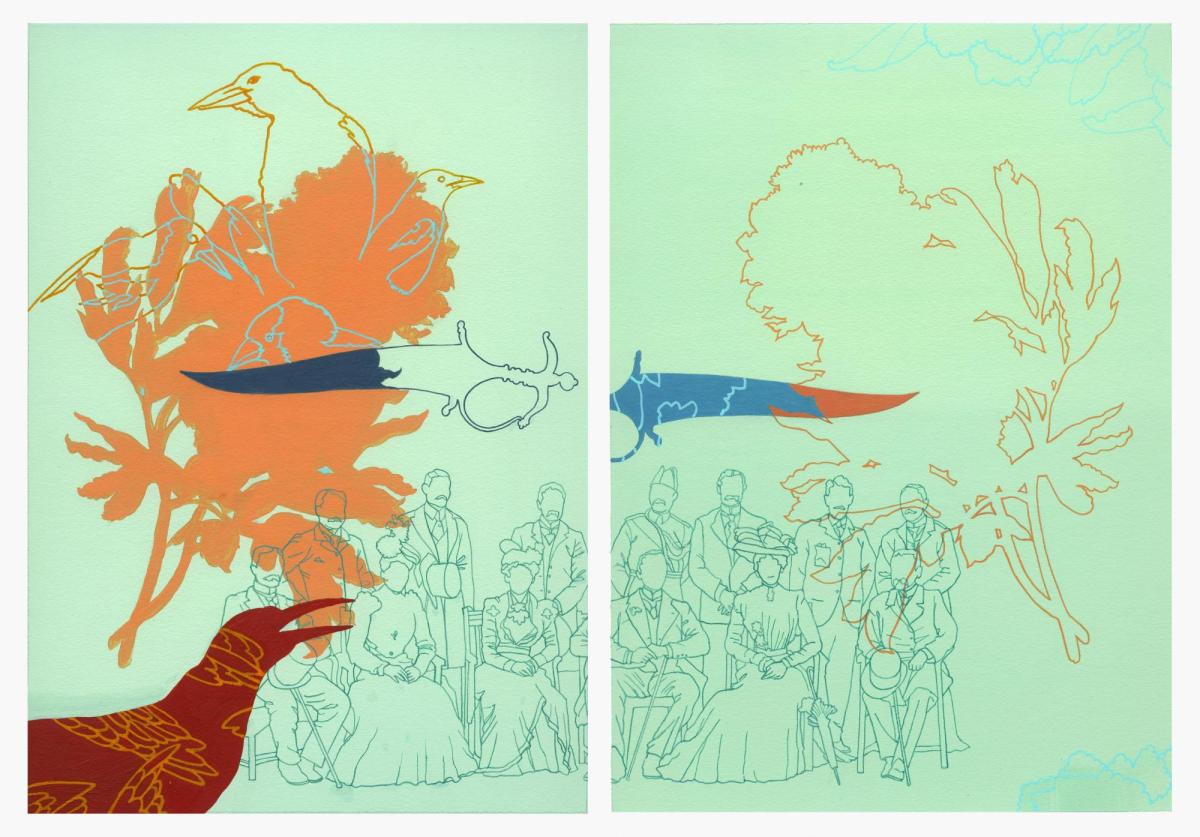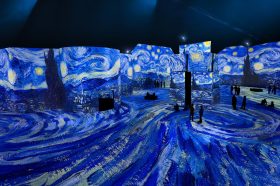Birds in Far Pavilions examines culture, country and colonialism in a thought-provoking exhibition celebrating the work of Melbourne-based, Pakistani-born artist, Nusra Latif Qureshi.
Qureshi studied at Pakistan’s oldest art school, the prestigious National College of Arts (NCA) in Lahore. The college was established in 1875 during the British colonisation of India. At the time, the Arts and Crafts Movement was flourishing in Europe and the college was set up as a centre for training and production for Indigenous art and traditional crafts.
Read: 5 exhibitions with contemporary diaspora artists reimagining traditional mediums
After British rule came to an end, and partition of Pakistan from India, the college continued to reflect Western artistic priorities and the idea of local artistic traditions and practices as ‘craft’.
However, during the 1990s, traditional techniques and practices began to be reimagined by a new generation of artists. Musaviri, the ancient Persian art practised in the courts of the Mughal Empire in the 16th century and referred to as ‘miniature painting’ by colonialists, was revived as a way to reflect and critique contemporary culture and society in works that are both subtle and provocative.
The illustrative art form involves an intricate process of outlining a subject in charcoal, then adding layers of pigment. The skills needed to produce the works were traditionally passed from master practitioners to students in an atelier system. Qureshi adopts many of these traditional techniques, practices and traditions, while at the same time adding novel elements such as photography. Traditional scenes of wildlife, hunting and battles are reimagined through a contemporary lens, with Qureshi using the form to question fixed ideas of culture and art.
The AGNSW exhibition covers 30 years of Qureshi’s practice in a diverse collection of more than 100 works. The exhibition title echoes the title of M M Kaye’s epic historical novel set in colonial India, The Far Pavilions. Pavilions were present in Pahari courts and often depicted as shelters for lovers in artworks. The bird motif is used by Qureshi as a metaphor for observation and a proxy for the idea of migration and flight.
Birds, Qureshi points out, hover above us. They look down from above, witness things we cannot see. They are also free to migrate at will – unrestricted by border controls, the need for passports and national concepts of belonging.
Qureshi says she is not judging, but making us question what we see around us, to challenge dominant and conventional readings. In the second room of the exhibition, the Museum of Lost Memories is presented in the style of a colonial museum, with collections of art and objects amassed in a series of dark wood and glass display cases. The seemingly arbitrary series of objects include miniature animals and sketches, as well as photographs, jewellery and ornaments.
They are objects collected over time, and space, and the site-specific installation reflects how borrowing and lending, purchasing and finding all influence culture and how this shifts over time. Qureshi resists a linear narrative, highlighting how the past influences the present and the present echoes the past. No explanation is given as to the connections or randomness of the objects chosen and the viewer is left to reflect on their own thoughts and preconceptions about what they are seeing.
The presented works are diverse both in terms of what they depict, and how Qureshi uses media to create them. Some of her early works depict almost literal depictions of historical events in Pakistan, while later work, created after Qureshi had emigrated to Australia, reflect broader ideas about margins, borders and cultural narratives.
A particularly striking example of this later work is the Refined Portraits of Desire, which draws inspiration from a collection of commercial photographic portraits taken in two Melbourne studios during the late 19th and early 20th centuries. A series of images are presented as negatives, inversing their original appearance, and making the viewer question the way women are represented.
Qureshi says, “Woman’s life is lived in front of a camera, how she is forced to present herself in a particular way, through dress, make-up and social conventions. Yet these create ties and connections across space and time, creating a communality binding women’s experience.” The portraits are connected by lines of red thread, inviting the viewer to connect to the shared narratives of women.
Read: Exhibition review: Archie Moore, Dwelling (Adelaide Issue), Samstag Museum of Art
“In these days of social media,” Qureshi says, “we are encouraged to respond and react, to have a visceral response to the world around us. Yet it absolves us of responsibility for how we respond and understand what we see and experience. I want to step back from that, to extend the range of possibilities for what is discussed. I want to create a distance from knee-jerk reactions”.
Nusra Latif Qureshi: Birds in Far Pavilions
Art Gallery of New South Wales
Free
Nusra Latif Qureshi: Birds in Far Pavilions will be exhibited until 15 June 2025.





